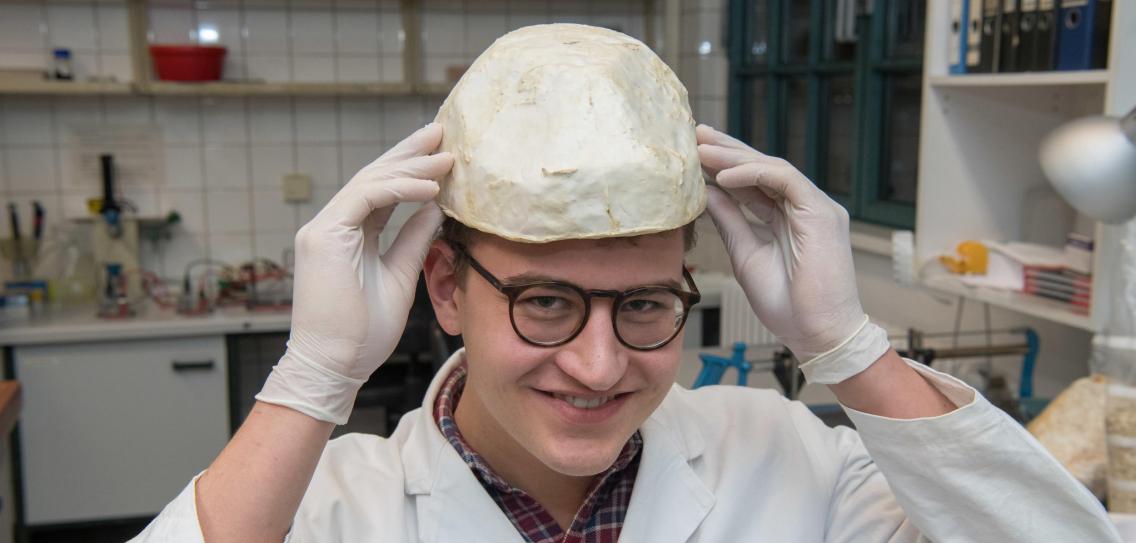
Lightweight helmet grown from tinder fungus. Photo: welt.de
According to the German newspaper Welt , scientists are trying to grow building materials and various household items from mushrooms, such as furniture and lampshades. They even managed to create a bicycle helmet: it sits on the head like a mushroom cap, has a velvety surface and smells a little of fresh straw. Thus, the mushroom could potentially become an environmentally friendly protective material that will be used under the usual outer shell of a bicycle helmet. However, the compliance of the impact resistance indicators of such a material with European standards has yet to be studied. In addition, scientists need to solve an important problem - how to prevent the growth of mushroom material in the event that drops of water fall on it.
We add that in recent years, scientists from many countries have been studying the possibilities of new biomaterials as an alternative to traditional ones. And the mushroom theme is an unconditional trend. Six years ago, it was reported that the United States had developed a technology for the production of biomaterials from fungal mycelium capable of forming a well-branched underground structure (the length of its filaments in one gram can reach 35 kilometers). Scientists mixed the mycelium with agricultural waste - old straw, soybean, rice and corn husks, and then placed the substrate in molds for several days. The result is very light, mold and fire resistant bricks, which are not inferior in strength to concrete. Moreover, after the completion of operation, the building made of biobricks can be demolished and sent to compost, without harming the environment.